|
In early 2019, I posted 5 places to go hiking in DC by metro, and made it a goal to find 5 more places around DC accessible by public transit over the next year. As more and more outdoor places and activities are starting to reopen, I thought that it would be a good idea to go ahead and share this post, along with the original one. Check to make sure in advance that the specific park is open before venturing out and remember to follow social distancing guidelines. The National ArboretumProbably the most underrated or unknown "monument" in DC, the U.S. National Arboretum is a gem and one of my favorite places in the city. This national research facility has historically been used to "test" trees and other plants before they're introduced into the U.S. and also for other research and display purposes. There are many collections from bonsai and ferns to conifers (highly recommend seeing these in winter) and of course the cherry blossoms that bloom in the spring. Plus, it's free to enter! How to get there: Although the Arboretum is right in the city, there's not a great way to get there via public transit. From Union Station, you can take the D8 bus to Trinidad Ave and then walk about 20 minutes up Bladensburg Rd. to the entrance on R St. NE. You can also take the Streetcar down H St. and do the same. There is also a Capital Bikeshare station right in front of that entrance or bike parking within the Arboretum. Beware of biking on Bladensburg Rd, there's no bike lane and cars go fast, so I suggest riding down the sidewalk. Suggested hike: You can do a 4-mile loop around the whole park, taking time to check out the plant collections along the way. This took me about 1.5 hours. There are some trails but you will also have to walk down the roads in the park, so beware of cars. Here is the map on the Arboretum website. I also highly recommend signing up for one of the monthly Full Moon Hikes. It is really cool to see the capitol columns at night and you'll get a guided tour of the park. Wheaton Regional ParkFor this project of finding places to hike within the DC area, I often just scroll around google maps and try to find the green spots. This is how I found Wheaton Regional Park and I was pleasantly surprised when I checked it out with the leaves changing last fall. How to get there: From Union Station, take the red line towards Glenmont and get off at Wheaton Station (about 20 minutes). You can walk or bikeshare from the stop to the entrance of the park on Arcola Ave. There is also the #9 Silver Spring bus that will take to the Arcola Ave & Orebaugh Ave stop in front of the park. If you bike from the city, the Sligo Creek bike path north with take you all the way there, and is a beautiful ride along the rocky creek. Suggested hike: There's plenty of trails, hiking, paved, and equestrian to choose from on the trail map on the website. My favorite was the Acorn Woods loop trail and also walking by Pine Lake. It took me about an hour to cover most of the park. Roosevelt IslandThis "living monument" is a hidden island on the Potomac River that you've probably passed by many times but never noticed. As a conservationist and champion of national parks and forests, former President Theodore Roosevelt definitely deserves a whole island and it is one of my favorite monuments, given the nature walks and quotes, e.g., "Conservation means development as much is it does protection." How to get there: Take the blue/orange/silver line to the Rosslyn metro stop in downtown Arlington. From here, it is about a 10-minute walk down to the river, where you will spot the pedestrian bridge to get onto the island. Suggested hike: I suggest making a zig-zag loop of all the trails on the island that will be about 3.5 miles with interesting views of the swamp and sights of DC from the river. You'll see Georgetown, the Key Bridge, and the Kennedy Center from a different perspective. Lake NeedwoodLake Needwood is another place I found scrolling the map as it is in the northern extension of Rock Creek Park in Maryland. I admit, it is not that easy to get to from the metro and you will spend some time walking through suburbia before you get to the lake. There is a Capital Bikeshare station at Shady Grove metro but not one in the park, so you may decide to take your own bike on the metro and ride it to the park. The views of the lake and picturesque strolls along the creek are worth it! How to get there: From Union Station, take the red line towards Shady Grove, and get off at the last station, Shady Grove (40-50 minutes). Out of the metro parking, take a left on Redland Rd. and then a right on Needwood Rd., about 2 miles of walking until you get to the Lake Needwood overpass, here you will see the trail entrance on the right, before you cross over the lake. Suggested hike: From Needwood Rd., walk along Westside Trail along the lake to the Needwood Lake trailhead and dam. After this, you can stay along the path that leads all the way to Rock Creek Park in DC. I took a small trail off to the side along the creek and then walked back to the Rockville metro station. This was about 9 miles in total. There are many options on how to get to the lake and walk or bike it, I suggest checking out the Montgomery Parks website. Greenbelt ParkI didn't actually hike in Greenbelt Park but it deserves special mention because I did bike all the way there (and back) from DC last fall and tried to explore the park, but it was closed in 2019 for construction and should reopen sometime in 2020, pending the current situation. Check the Greenbelt Park website for more updated information. How to get there: If you have a bike, I highly suggest taking the Anacostia River Trail and then NE Branch Trail, this is about 15 miles from NE DC. Otherwise, you can take the Green Line metro towards Greenbelt, and get off at the second to last stop, College Park. From there, it is a 1.5-mile walk to the south entrance of the park along Good Luck Rd. Suggested hike: Check out the walking tracks on the Greenbelt Park website. Don't forget to check out the original post on 5 places to go hiking in DC by metro and comment below on more ideas.
1 Comment
I don't usually do new years resolutions, per se, but I do set themes for the year in terms of personal development. This year has been about two major themes, one of them being personal finance, and the other I will write about at a later date. In personal finance, my overarching goals have been to pay off my student loan and save up for buying a home. This means that I've had to re-examine everything that I spend money on and inadvertently tackle a huge societal theme: consumerism. Before I embark on a personal development theme, I investigate it through books, blogs, and yes, even instagram. I came across the Frugalwoods blog and her book on financial independence and simple living. Ms. Frugalwoods gave me the confidence that it's totally possible to drastically reduce your spending and still live a happy, if not even happier, life. I've been a fan of simple living and minimalism ever since I sold all of my things and moved to Europe with two suitcases. There's something freeing about not being tied down by your material possessions. So the first step in this process was getting rid of the unnecessary things that I had accumulated upon moving back to the US with the 30-day minimalism game (blog post here). I then came across the idea of a shopping ban, from Cait Flanders' book The Year of Less. I like challenges and I was ready to take this one on. Wow, it was much harder than I thought it would be. Over the last few months, I have come face to face with consumerism, how much it dominates our society, and my own personal habits and responses to it. ConsumerismWhat exactly is consumerism? According to investopedia, "Consumerism is the idea that increasing consumption of goods and services purchased in the market is always a desirable goal and that a person's wellbeing and happiness depends fundamentally on obtaining consumer goods and material possessions." In other words, consuming is good for the economy and our happiness depends on it. When your happiness depends on anything but yourself, like a relationship, alcohol, or material possessions, it is ultimately toxic. Dependence on something can provide you with temporary highs, but does not contribute to, and can even hinder, long-term happiness and fulfillment. I never thought that my shopping habits were an issue. I have always spent within my means, I don't have credit card debt, and I have fewer possessions than my peers. But the real skeletons in the closet started to come out when I tried my first shopping ban. Shopping ban, round #1The first shopping ban started earlier this year, where I gave up shopping for anything but groceries for a successful two months. The first thing that I noticed was the lack of boxes in my room. I don't have a car or a big mall/supermarket nearby so I mainly online shop. And, I tend to over-buy and return so that I can try things at home and take my pick. Therefore, I sometimes have quite a few boxes in my room of things I've received or am waiting to return. I coined the lack of boxes, #boxzero (like #inboxzero). After the "successful" two-month shopping ban, I allowed myself to buy things again, and buy I did. Pretty soon my room had boxes again. So was it really a successful shopping ban? I don't think so, I made up for what I didn't buy. This reminded me of the dieting and binge eating cycle, where you restrict something for a period of time but then binge on it after. So I gave up on the idea of a shopping ban, because it would just make me binge shop after. Shopping ban, round #2I spent a few weeks over the summer in Europe and without meaning to, I didn't buy anything besides groceries during that time. It reminded me of when I lived in Europe a few years ago, and I realized that the U.S. really is a consumerist society. So, what is it about Europe that's different? Even when you walk down the main streets of Vienna, Bucharest, Zurich, etc, they are filled with stores, both local and the mega fast fashion chains. Cait Flanders' book is all about finding the triggers and habits that lead you to shop for things you don't necessarily need. Examining my time in Europe vs the U.S., here are some of my own habits:
I found that when I travel or live outside of the U.S., these triggers aren't really present and so my shopping habits don't arise. However, when I came back this fall, the triggers came back, and so did the boxes. I made a couple of orders for new clothes and a halloween costume, and as if knowing that I was struggling with keeping up with shopping bans, the boxes got stolen off of our front porch. Not once, but twice, when I re-ordered the same things again to replace them. Spending hours on the phone trying to get my money back and re-order these things for the third time was my "rock bottom" in this whole shopping ban process and why I call it a failure. In the end, we learn from our failures and I've embarked on mindful shopping instead of outright shopping bans. Lasting mindful shoppingMuch like restrictive dieting, the shopping ban per se didn't work for me. However, not shopping at all did help me realize what my triggers and habits for shopping are, as listed above. So now what I do, is before buying anything, I ask myself these questions:
When I was young, I had a Carmen Sandiego book where she she went to Machu Picchu, and it always stood out in my mind as a place that I had to see for myself. Something about building a city on top of a mountain seemed impossibly appealing. I finally did get to visit Peru and Machu Picchu with my family and a close friend last month. What I liked most about Peru was learning about the ancient cultures that lived there before Europeans arrived. I am intrigued by some of the general beliefs of Native American peoples, especially in terms of their connection and respect for the environment, and the plants and animals around them. For the ancient people of the Andes, the goddess “Pachamama” is the origin of the four elements and basically embodies “Mother Earth.” She is responsible both for bringing harvest, and natural disasters, like earthquakes. Taking too much from Pachamama, without giving back, is believed to cause these disasters. While I don’t connect as much with the sacrificial practice of “giving back” to earth, I do think we can live in harmony with it, and that is reflected in the ways the Incas and pre-Inca tribes lived in South America. The gateway town to Machu Picchu, Aguas Calientes, is only accessible by train and has no cars. I love car-free towns. I always thought that car-free towns were quiet because of the lack of traffic noise, but this town was loud, day and night, with the streets truly reserved for the people, like a community park that grows through the town. There was also a hydro plant on the Machu Picchu river that we got some great views of and it made me happy that the mountain air wasn’t spoiled by pollution. We used the tour company Tierras Vivas, which is committed to responsible travel and also hires and trains women to lead tours. Seeing Machu Picchu revealed to us after a long hike in high altitude was literally breathtaking. After following the Inca trail, I could see why they picked this seemingly remote and hard to get to mountain to build their city and temples. It was surrounded by sharp mountains enveloped by soft clouds on all sides. A city protected by the elements that conquerors could never find, and wouldn’t until 1911 While Machu Picchu was the amazing place that I expected to be, there were many other endearing and unexpected experiences that we came across on our trip in Peru. From hunting signs of extraterrestrial influences featured on Ancient Aliens to the countless and varied versions of vegetable quinoa soup that I had nearly every day. The experience that stood out to me most, however, were the floating islands of Uros. Lake Titicaca is the highest navigable lake in the world and one of the largest in South America, sitting in the highlands between Peru and Bolivia at 12,500 feet (3,800 meters) above sea level. Puno is a city on the bay of the lake that faces east. I got up early one morning to climb up to a viewpoint above our hotel to catch the sunrise coming up through the narrow inlet of the bay formed by the two peninsulas. Again, an impeccable placement of a settlement by the ancient tribes to pay tribute to the rising sun. Off the coast of Puno in the bay is a marsh made up of very tall grasses, akin to the Everglades that I’m so familiar with in Florida. On the second to last day of our trip, I booked a boat tour that would take us to visit the floating islands of Uros within theses marshes. I didn’t really realize what “floating islands” meant until we got there, and we were all impressed. The Uros are a community of about 2000 indigenous people living on over 100 islands that are composed of the straw-like marsh grasses and mud. They live on the cold water year-round, constantly re-building their islands and homes from the degradation of the elements. It is really an amazing site to see, a community that looks primitive but is actually very innovative, figuring out how to live in concert with the lake and marsh in quite harsh conditions. The Uros use the environment around them for everything. The long grass-like plants in the marsh are their islands, their houses, and their food. They have an extremely close and unique community, because they rely on each other to survive. The kids go to school (by boat) and there is even a floating island dedicated to a medical center. It’s easy to question, how people can live like this, and why? Everything is wet and cold and they have to work on rebuilding their islands everyday. The Peruvian government had even offered to move them back to shore in the 1990s but they refused. The Uros want to live as their ancestors had. Instead, the government built better sanitation huts and provided solar panel/battery systems. One woman, Margarita, offered for me to visit inside her house and she boasted at having the solar/battery to charge her phone. The Uros people would probably also think our lives are strange. That we spend our days inside, in front of computers or commuting in our cars and packed metro trains. We deal with endless administration and bureaucracy. While, they probably don’t have paperwork, because paper gets wet! We only spend two (three if we’re lucky) weeks per year on vacation, visiting their mountains and their islands, a place that they get to experience every day.
My father is not a religious man, or so he claims, but he is spiritual in a way and always remarks when we’re at high altitude, in the mountains, that this where we are closest to god. Not in an enclosed church, but facing an expansive lake where you can see the snow-capped mountains touching the sky and feel Pachamama in between the scarce particles of air blowing around you. Everyone seems to be Marie-Kondoing right now, so much so that thrift stores are actually having a huge influx of items that they can't deal with. Marie Kondo has been around for a while but recently got more popular in the U.S. with her Netflix series. I've been following the "minimalism" movement on The Minimalists blog for a few years, and mainly started reading about it before I moved to Europe for business school. At that time, I got rid of nearly everything that I owned. I stored some sentimental things (photo albums, diplomas) at my parents house in Florida and then sold my largest and most important possession at the time - my trusty little Honda Civic Hybrid. My car was harder to let go of than I thought, it had been my first and only car (and one of the first hybrids on the market) and had moved me all over the country on many adventures. Before I even knew about the sparking joy concept and thanking your items (Marie Kondo method), I thanked my car for all the places that it had taken me and cried as it left for a new owner. While I lived in France and Austria, I kept to my 2 suitcases and when I bought something new, I had to get rid of another thing to make room for it. Even settling down in an apartment in Vienna, Austria, I didn't accumulate many things because I didn't have a car to go outside the city to shop at malls/Ikea, and the stores in the city were almost always closed when I was off work (everything closes on Sundays in many parts of Europe). In addition, I had to be home to accept any packages from Amazon, otherwise they wouldn't deliver them. Upon moving back to the U.S., I've seemed to accumulate a lot more things than I meant to. American consumerism is so engrained in society that even though I prefer minimalism, I still find myself buying things that I don't need without even realizing it. Shops are plentiful and open at all hours, advertisements promising happiness are everywhere, and you can buy anything you could ever want online and get it delivered within 2 days. A few months ago, I realized that I had way too many unnecessary things and my space felt cluttered, so I decided to play the 30-Day Minimalism Game. I have been following The Minimalists for a while, they also have a documentary on Netflix, but I had never played their game. The basic rules are that you get rid of 1 thing the first day, 2 things the second day, 3 things the third day, and so on until 30 things on the last day. That's 465 items total! It seems like a lot but doing it gradually over 30 days doesn't seem so extreme. It actually took me over three months to complete the game because of my travel schedule, I wasn't home 30 days consecutively. Speaking of travel, I actually love living out of a suitcase because I have so few things I feel "light" and I don't have to make too many decisions about what to wear. I like the concept of being able to pack up and move on, it makes me feel free and unburdened. This confirms for me that I prefer to be a minimalist. The game is also fun to do with a partner and send pictures to each other of what your getting rid of. So what counts? I got in an argument with my partner because I was getting rid of nails (the type you hammer into walls, not fingernails) and counting them individually, there were over 50! He said it should only count as one item, so I settled on counting it as 10 items. Anyway, you make your own rules for counting. I also altered the game slightly. Normally, you can sell, donate, or trash your items. I also decided to add a category of fixing things to incentivize myself to fix things instead of get rid of them and buy new ones. You should also practice a shopping ban during this time. I'll be writing a separate post on that... At first I thought that I wouldn't have 465 items to get rid of, do I event own that many things? It was definitely easy at first and then I hit a slump around day 23, at which point I had to go through all of my spaces again to really think about the items I owned. In switching out my winter for summer clothes and doing some spring cleaning this weekend, I finally reached day 30! How to decide what to get rid of? This is where watching the Marie Kondo series is helpful. My own guidelines are to get rid of things that I haven't used in a year or keep around "just in case." For example, I turn the hangers in my closet inside out every season. Once I wear something, the item goes back on it's hanger the right way in. All of the items still hanging on inside out hangers at the end of the season get donated (or sold if they're in good condition). I also think to myself, would I pack this item in my two suitcases to move to Europe? If not, I probably don't need it. What did I get rid of? So many things I don't event remember. I fixed 4 things, including a watch, parts on my bike, and sewing some pants (instead of buying new ones). I posted 47 items to sell on eBay and Poshmark. I ended up selling 27 of them, making a total of $158.26. I donated the items that didn't sell and donated an additional 141 items. It can be hard to donate things without a car, but there are Planet Aid bins around cities and H&M takes used clothes for recycling. You can also schedule a home pick up for donations with organizations like GreenDrop. Finally, I trashed 273 things. So that's 59% trashed, 30% donated, 10% posted to sell, and 1% fixed. My space feels much better now, it's never cluttered and every item has a dedicated place and purpose. I think I could get rid of more things and really streamline, but my focus now will be to not accumulate more things. It is not sustainable to be buying this many things and then trashing or even donating them. The goal is not have this much stuff in the first place. So I'm experimenting with a few things like mindful shopping and buying used items, I'll be writing more on that later!
Winter is gloomy and season affective disorder is a real thing. The best way that I combat it (besides taking vacations to somewhere warmer like I usually do for my birthday in February) is getting outside. When I think about getting outside in the winter, and winter sports, I usually think of snowboarding and skiing. In addition to that, this year I tried something different. I love hiking and normally reserve it for the warmer months. I had honestly never thought about hiking in the winter. All of the ice and snow and cold air would make it pretty difficult and uncomfortable, right? Then I came across the Winter Hiking Series at my local REI store in DC. If you don't know, REI provides all kinds of outdoor classes and events (and transportation!) everywhere that they have stores. I try to do something outside in nature every weekend that I'm home and even when I'm traveling. I perused the REI events site trying to find something that would take me outdoors in January and found their Winter Hiking Series, which involves a day-long local hike led by an instructor and they give you tips along the way on hiking in the ice and snow. I signed up to go on the White Oak Canyon (in Shenandoah National Park, Virginia) trip and my first step into the woods, I fell in love with winter hiking... It doesn't snow that often in the DC area but we got lucky that weekend with the snow starting to fall during our hike and giving the woods a light dusting of white. It was beautiful, serene, and peaceful. Shenandoah is usually packed with hikers on nice days but in the winter, it is pretty much empty and you have the trails all to yourself. The hike started out pretty easy but got much more difficult as the snow came down and covered the ice on the trail. Ice is hard enough to walk on but even harder to gauge when it's covered with snow. Our guide was pretty good at pointing out the ice and going slow, hiking poles helped too, but a few people in my group still fell on their butts. It definitely got much more difficult coming back down the trail on icy snow, but we made it, and it made the hike all that more challenging and rewarding. My next favorite part of winter hiking, is the frozen waterfalls. Waterfalls are amazing to see normally, and frozen they are stunning! You can see the partly frozen waterfalls of White Oak Canyon behind me in the picture above. It's unique to see frozen layers with some water still gushing underneath. Even more unique is to see a huge fully frozen waterfall like the one below. That's Palisade Falls near Bozeman, Montana. It's hard to capture the majesty of a huge frozen waterfall in a picture but you can kind of see the scale above with me standing in front of it. You can walk straight up the waterfall (and even climb it) and it feels like it may break and swallow you up at any moment. My friend Chelsea and I took this side trip to explore the waterfall during our ski/snowboard trip to Big Sky, Montana. Read Chelsea's full post about it on her blog Her Life Adventures. Winter hiking isn't always snowy and icy and can be quite gloomy, as well. I went to San Francisco in early March, it was raining the entire weekend but we still took the plunge and got outside to take a stroll on the Lands End trail, part of the Golden Gate National Recreation Area. Wet and covered in mud, we finally got what we came for when the Golden Gate Bridge peaked out from the gloominess as Karl the fog lifted for a second (pictured above). Winter hiking can be cold, wet, and gloomy, but is completely worth it to get outside and get over that seasonal affective disorder. Plus, you see some cool things once in a while, like frozen waterfalls! Be prepared and read my tips below. Tips for Winter Hiking
I know that winter is almost over in the Northern Hemisphere but there's still plenty of places with snow and time to get out there and see some frozen waterfalls or start your Spring hiking season early. Would love more winter hiking or outdoors ideas in the comments below. Moving from Portland, Oregon, to Washington, DC, I was afraid that I would miss the mountains and outdoors, so I made it a point to get outside every weekend that I'm in town. There are many parks and natural areas around DC, but most you need a car to get to. I don't have a car so I've made it my mission this year to find places to hike that are accessible by public transit, including the metro, bus, and even streetcar. Here's the list so far and also check out the newly posted 5 more places to go hiking in DC by metro. Rock Creek ParkDefinitely the easiest hiking to get to in the city, Rock Creek Park takes over NW in terms of green space. There's various ways to get there and plenty of trails, I've described my favorite below. How to get there: Take the Metro Red Line towards Shady Grove and get off at the Van Ness-UDC stop. Walk north on Connecticut Ave. and then take a right (head east) on Albemarle St. NW. Shortly will find the Soapstone Valley Park trailhead and you can follow this all the way into Rock Creek Park (about a mile). Takes about 20 minutes from Union Station. Suggested hike: From the Soapstone trail, connect to the Boulder Bridge Hike trail (pink blazes) to take you on a 3.5-mile loop through the park. With the mile-long Soapstone trail and any additional scenic detours you take from the main loop, this can be about a 6-7 mile loop hike total taking about 2.5-3 hours. Glover Archbold Trail and Whitehaven TrailI love that in DC you can be surrounded by buildings and then seemingly disappear into the woods and lose all sounds of the city. The Glover Archbold Trail is just that, connecting the C&O Canal to Rock Creek Park through the Whitehaven Trail. It one of these long green spaces that you look for on a map, but don’t really know what it will entail until you get there. How to get there: This one is a bit tricky. First, make your way to Georgetown, which is not connected by the metro but many bus lines do go through there. Then, you can start on the C&O Canal Trail from the Georgetown waterfront and proceed for about half a mile. You’ll find a (very creepy) tunnel under the road taking you off the C&O Canal. The trailhead for the Glover Archbold Trail is closed here but you can walk through the Georgetown campus behind their main bus stop round about. There is a gap in the fence that leads to the trail. I recommend using Google maps on this one! Suggested hike: From Georgetown, take the Glover Archbold Trail for about a mile north. Then, you can head east on the Whitehaven Trail, passing by a charming community garden and ending north of Georgetown, or continue north on the Glover Archibold Trail throug the park and ending at Van Ness St. in about two miles. Overall, a 2-3 mile hike taking 45 minutes to an hour. Accontik TrailI discovered the Accontik Trail as I was looking for a place to hike near my friend's house in Vienna. It's actually a really long trail through Northern Virginia and good for biking. The part I describe below is easily accessible from public transit. How to get there: Take Metro Orange Line to Vienna and get off at Vienna stop. Take bus 1A towards Ballston and get off at Arlington Blvd & Covington St stop. You will see the paved trailhead right off of the road. Takes about 1 hour from Union Station. Suggested hike: 5-mile out and back loop from Arlington Blvd., takes about 2 hours. Anacostia River Trail and ParkEveryone knows about the bike trails along the Potomac River, but how about try the Anacostia River Trail for a change? There's boardwalks, bridges, and even a few hills along this scenic river route that takes you to the Anacostia River Park in Maryland, with a pier, rowing club, and boxcar to explore. How to get there: Bike east down G St. NE from Union Station (through the H St. corridor) and Benning Rd., you will find the Anacostia River Trail after crossing the Benning Rd. bridge. You could also take the DC Streetcar from Union Station Eastbound to the last stop on Benning Road and similarly cross the bridge on foot. Suggested hike: 3.5 miles one-way from Benning Rd. to Anacostia River Park, takes about an hour walking. This is also a great biking trail. Kenilworth Park and Aquatic GardensDC was built on a swamp and you can really see the remnants of this in the Kenilworth Park and Aquatic Gardens. With boardwalks through marshes and gorgeous flowers growing out of lily pads, I highly recommend going in spring/summer. How to get there: The most direct way to get there is via the Orange/Blue metro line in the direction of New Carrollton and get off at the Deanwood stop, about 30 minutes from Metro Center and then walk 12 minutes (0.6 miles) to the park entrance on the west side of the Anacostia freeway. However, the most fun way to get there is to bike east down G St. NE from Union Station (through the H St. corridor) and Benning Rd. and then north on the Anacostia River Trail, taking about half hour from Union Station. You could also take the DC Streetcar from Union Station Eastbound to the last stop on Benning Road and similarly walk north on the Anacostia River Trail for about 3 miles (1 hour). Suggested hike: There's a maze of dirt paths and trails through the park, so you can make a leisurely walk of about 2-3 miles, approximately one hour, depending on how many times you stop to take pictures of the flowers. Be sure to also check out the newly posted 5 more places to go hiking in DC by metro.
You may have noticed that I haven't written on this blog in a while (since 2015) and that I recently updated this entire website. What inspired this was looking through my iPhone photos, I was trying to find a good picture of nature that I took myself that I could use on my various social media pages. The vast views of nature - whether it be beaches, mountains, or plains - inspire me and motivate me to continue to preserve nature in my work.
I came across the picture above that I took nearly a year ago in Patagonia. It shows the massive Grey Glacier leading into Lago de Gray, with majestic mountains in the background, and gray sky forming into painted clouds. It really is a beautiful picture and perfectly captures the magnificence of Torres del Paine National Park in Chile. Beyond beauty, this photo also captures the fragile balance of nature. The icebergs in the foreground are the remnants of a huge chunk of the glacier that broke off a few months before my visit. Just 30 years ago, the glacier still came up all the way to where I am standing taking that picture. See these satellite images of Grey Glacier taken by NASA in 1986. I selfishly thought to myself, I'm glad that I saw this before the glacier recedes even more, and turns into just Lago de Grey. I fully realize that my own travel to these beautiful and far away places contributes to pollution, climate change, and environmental degradation. I reduce my impact in many ways: eating less meat and no dairy; giving up a car and biking/metro-ing instead; shopping less and reusing more (still working on this one!); and of course, working in an industry that provides a significant portion of carbon-free energy. But travel is one thing that I'm not willing to give up. Therefore, the least that I can do is share the things that I learn from traveling, in hopes of inspiring others to live sustainably in the ways that they see fit. The original name of this blog "Living" is still very appropriate, living sustainably, mindfully, and with positive impact. Everyone is living in their own way and I'd like to share my way of living. Welcome back to the blog! I'll leave you with another beautiful picture of Grey Glacier leading into Lago del Grey. I spent this year exploring new places, learning about new cultures, challenging my thinking, making lifelong friends at INSEAD, and starting a new career at the IAEA. Here's to a great 2015 and an even better 2016!
When thinking about my first post on this blog, I wanted to write about something that defines me. My grandmother passed away recently and it had me thinking a lot about my family and where I come from. My grandparents raised my father to be be his own person, and he raised me the same. My independence and my need to challenge ideas and norms define me, and I get those, in part, from being a refugee. My parents grew up in what is now known as Slovakia, and what was then part of the Soviet Union. In a small town (really, a city in their terms, but small town to me), my parents met through friends. My mom played basketball for the city and was able to travel and see other parts of Europe, while my dad yearned for a way to break out of the communist regime and see what else the world had to offer. In Spring 1986, when the Chernobyl accident happened, my mom got pregnant with me (I know, it's ironic that I’m a nuclear engineer). Discussing the possibilities for a while, my mom and dad decided to leave the country. They packed nothing, didn’t tell anyone, and left in car with money hidden in the tire. They safely crossed the border, using a fake alibi, and eventually settled in a refugee camp in Austria. My dad got a job doing manual labor and I was born soon after. While slightly different back then, the refugee system was still essentially the same. You worked and you waited your turn. You lived in a house with other families and you didn’t contact your family back home - in fear that they would get questioned and threatened by the authorities. Speaking of fear, can you imagine escaping a country? Facing the risk of being arrested and not know what will find you on the other side? And while pregnant? Leaving was not an easy decision and took bravery to execute. However, you can’t change your circumstances without risk and the ability to take action. And the family you left behind, they’re worried and afraid, and I can still sense some resentment in my family for us leaving. My grandparents came to visit us secretly in the refugee camp after I was born. My grandma jokes (jokes now) that my mom was afraid that they would take me away, back to Slovakia. After two years in Austria, my parents and I finally got our chance to start a new life. We were sent to Boston and the US refugee program set us up with an apartment and a job for my Dad. We started learning English and integrating into society. Once we could live on our own, we moved to Florida to be closer to some distant family, and for the weather. I started school in Miami and had to be in the English as a Second Language (ESL) program until I caught up to my American classmates. My two younger sisters were born in Miami and my parents then applied for citizenship. After a few years in the US as contributing members of society, we became citizens. Meanwhile, the Soviet Union broke up and Slovakia gained back its independence. It joined the EU and is now a fully integrated member with a stable economy. Things are much better than they used to be and my cousins live good lives, working around Europe. I probably would have ended up with a great life if we hadn’t left Slovakia, but I don’t think that I would be the same person. My adaptability, curious mind, need for adventure, and sense of entrepreneurship come from my unique upbringing in a different country. I feel the need to do great things because my parents took great risks to make sure that I grew up in a country of opportunities. While America may not seem like the utopia it used to, it is still the easiest place to start a business, make something of yourself, and be who you want to be. America is a land of immigrants and that’s what makes it so unique and successful. It takes risks from both sides, from the immigrants and from the host country, but the risks are worth it because the nation and people are richer, in culture, life, and wealth, in the end. I’m living back in Austria now and feel like I’m reliving my parents' escape. People are trying to seek better lives, only to encounter closed doors and racial discrimination. Back then, people didn’t want the communist refugees and my friends still joke that I’m a spy. I am an entrepreneur, I work for the United Nations, my family is from Slovakia, I’m American, and I am a refugee. This post is dedicated to my grandma,
"Babička" Mária Kollárová May she rest in peace. After the retirement of my Healthy Fit Goddess blog earlier this year, I'm finally back! I'm excited to blog on a more personal note, sharing my experiences and ideas in entrepreneurship, healthy lifestyle, and travel. I hope that you keep following me as I build this blog and please send me your comments, ideas, and inputs!
|
Lenka KollarEcomodernist and nuclear engineer inspired by nature. Archives
May 2020
|
Photo used under Creative Commons from Artem Beliaikin



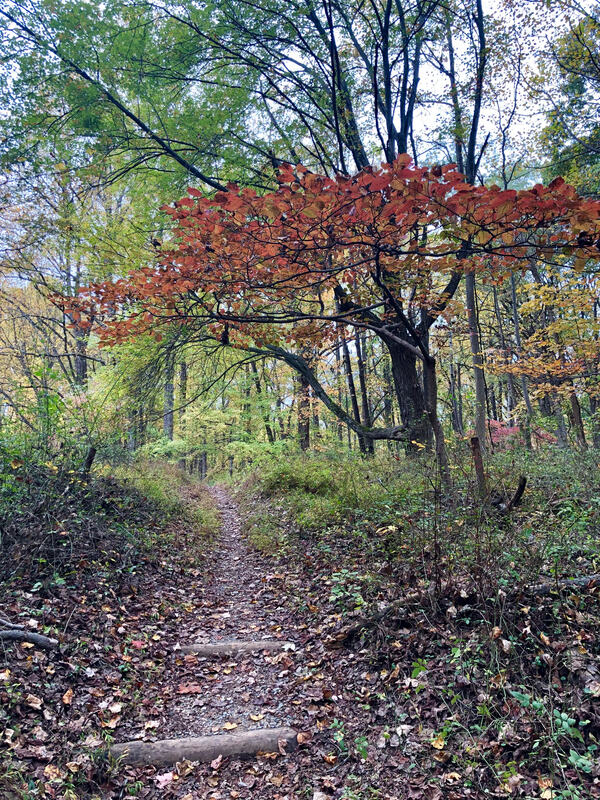







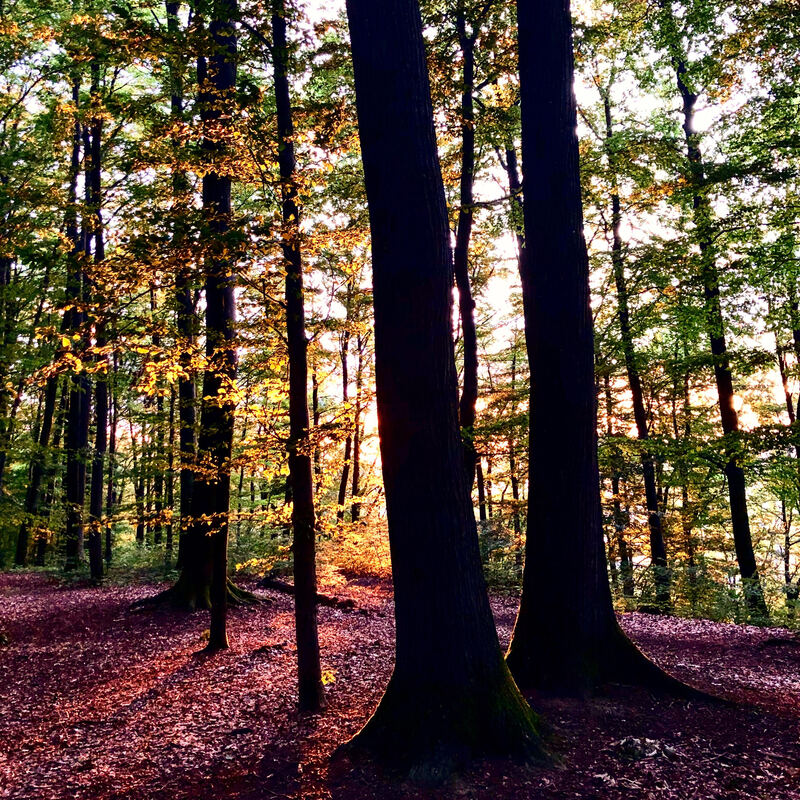







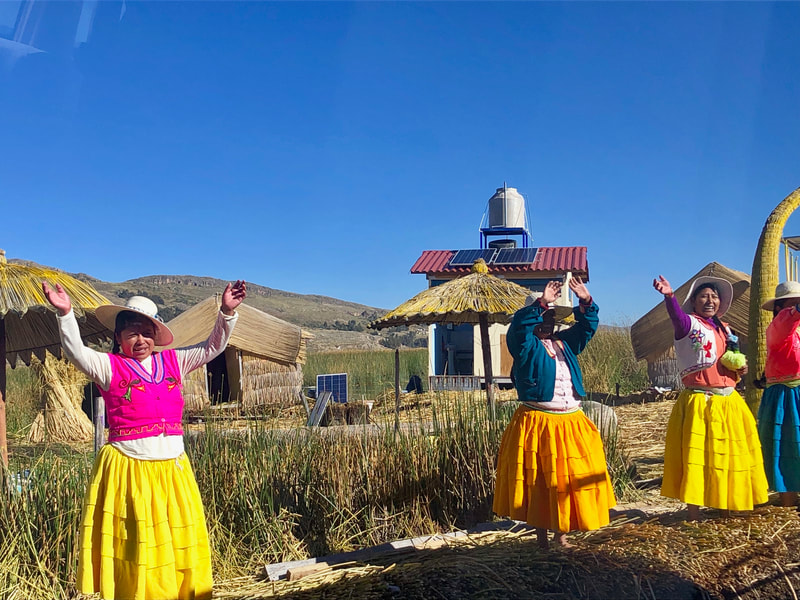

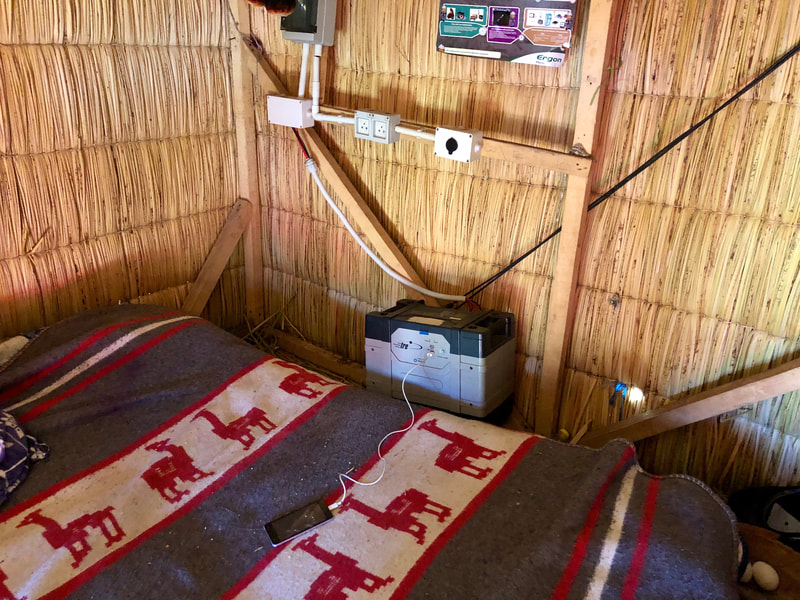









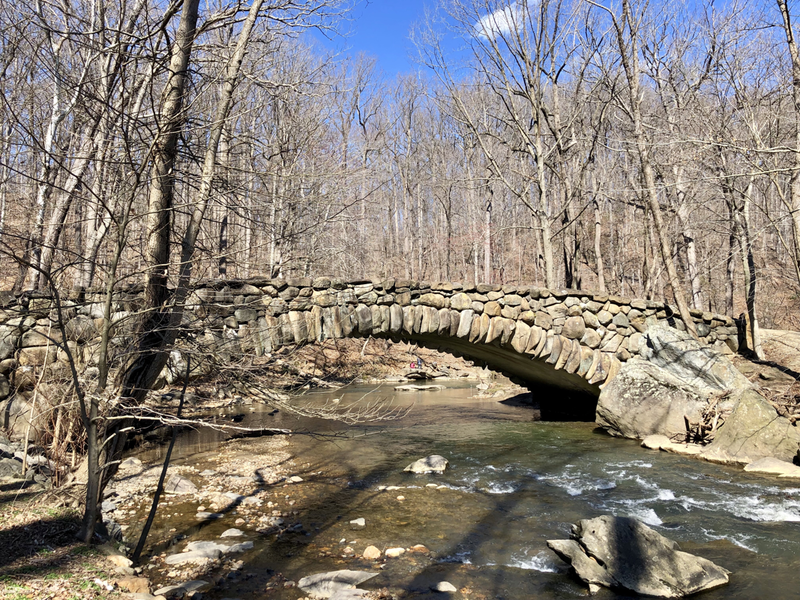





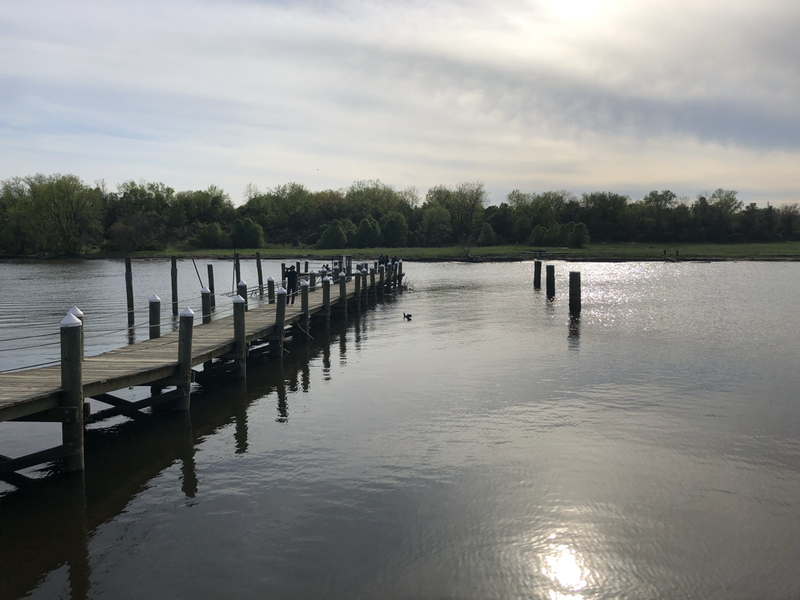
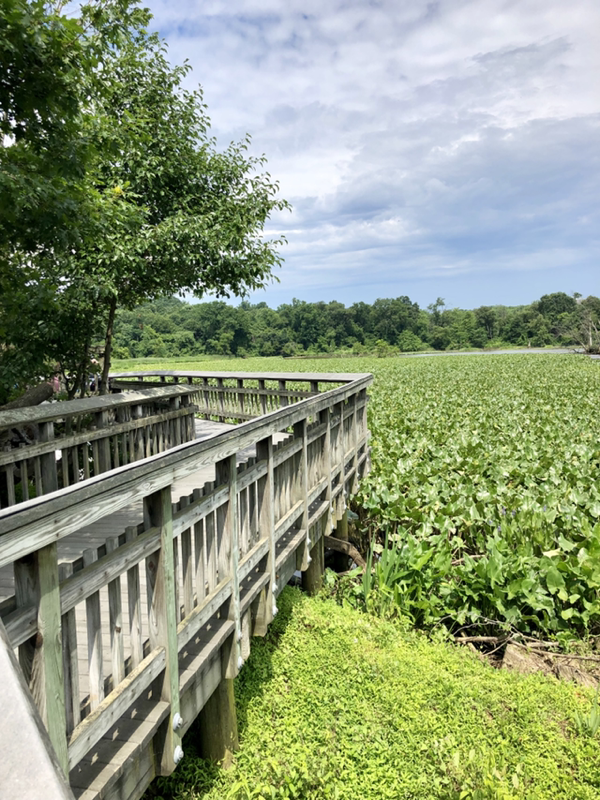

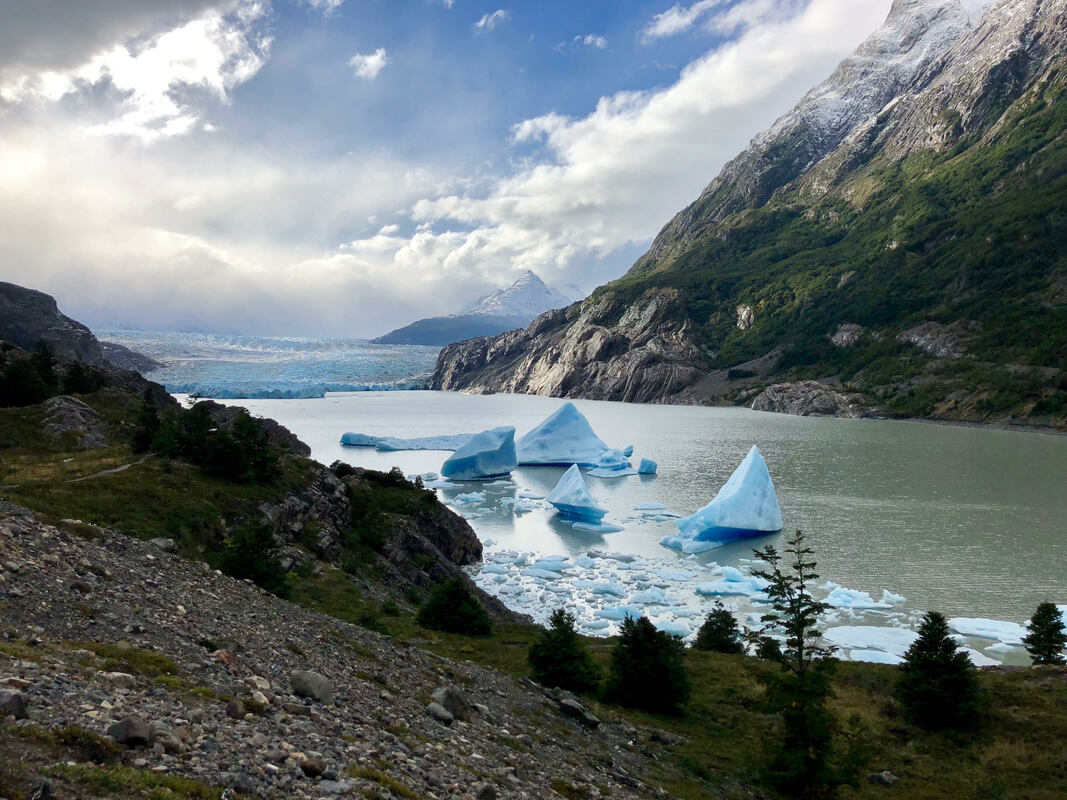

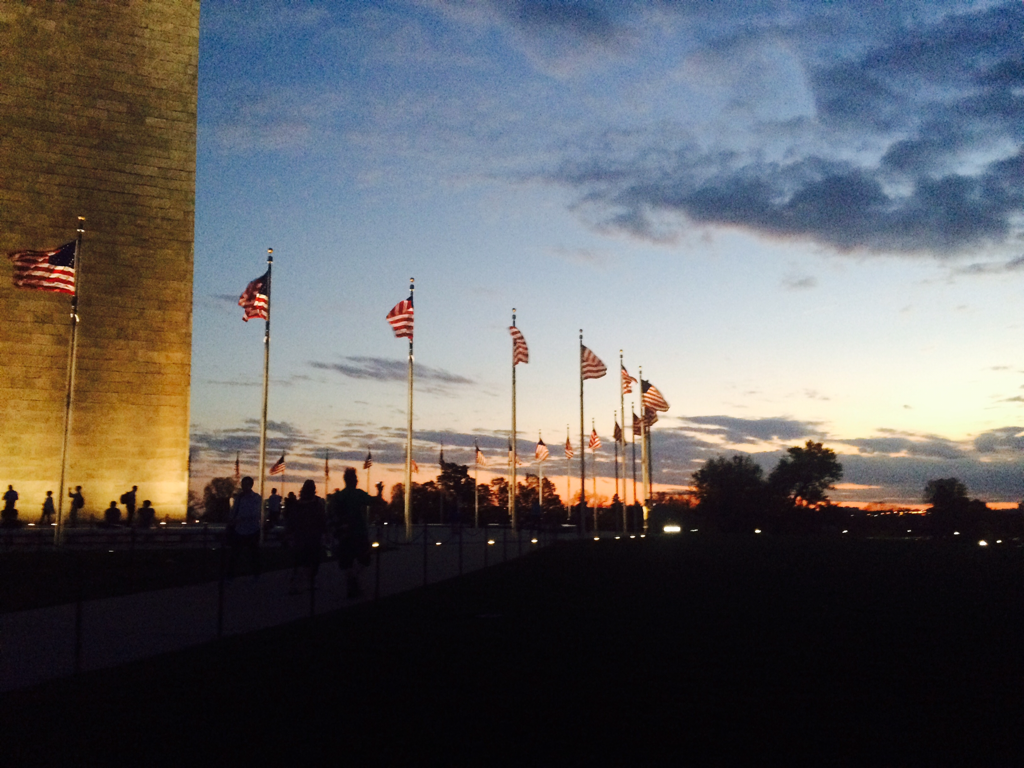

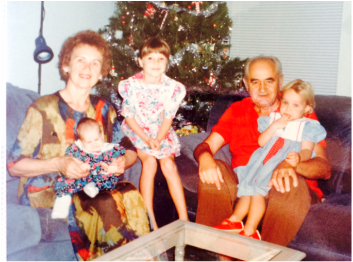

 RSS Feed
RSS Feed
